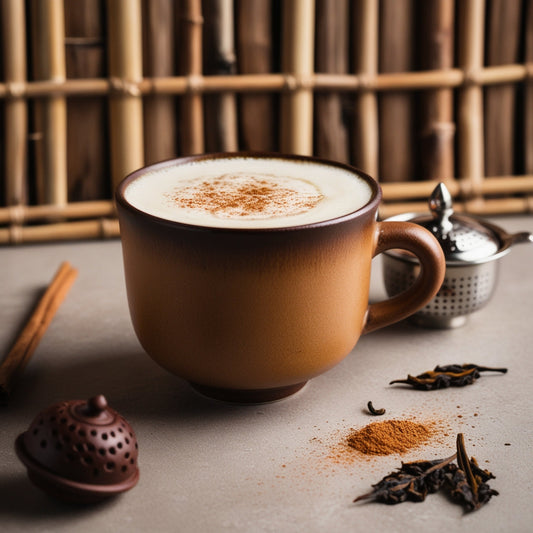Overview
Ever wondered what makes Pu-erh tea so special? Selecting high-quality Pu-erh tea can transform your tea-drinking experience from ordinary to extraordinary.
In this article, we will delve into the essence of Pu-erh tea, understand the key quality indicators, explore the different varieties, and uncover the numerous health benefits of this remarkable tea.
Join us as we unravel the art of choosing the best Pu-erh tea for your enjoyment.
Table of Content
- Introduction
- The Essence of Pu-erh Tea
- Understanding quality Indicators
- Exploring Pu-erh Tea varieties
- Pu-erh Tea health benefits
- Conclusion
Introduction
In the world of tea enthusiasts, Pu-erh tea occupies a revered status. This exceptional brew, originating from the Yunnan province of China, is celebrated for its profound, earthy flavors and the unique characteristic of improving with age. Unlike other teas, Pu-erh offers a depth and complexity that can captivate a gourmet’s palate.
Selecting high-quality Pu-erh, however, is an art form that involves understanding its multifaceted nuances and characteristics. Furthermore, this guide is dedicated to unveiling the secrets of Pu-erh tea, helping gourmets like you to make informed choices and revel in the superior tea tasting experiences that Pu-erh offers.
And that’s why tea nerds are obsessed with this tea.

The Essence of Pu-erh Tea
Pu-erh tea, known for its fermentation process, imparts a complexity of flavors and aromas that are unparalleled. It is broadly classified into two types: Sheng (raw) and Shou (ripe), each offering a unique journey of taste.
- Sheng Pu-erh: This is the traditional raw form of Pu-erh. Sheng Pu-erh undergoes a natural aging process, during which it develops a refined complexity. Young Sheng teas are often vibrant and astringent, but with age, they mellow down, acquiring a smoother, richer profile.
- Shou Pu-erh: Introduced in the mid-20th century to expedite the aging process, Shou Pu-erh undergoes a controlled fermentation that imparts a dark color and a deep, earthy flavor. It is smoother and less astringent than young Sheng Pu-erh, making it a favorable choice for those new to Pu-erh.
Understanding Quality Indicators
Selecting a high-quality Pu-erh is integral to the gourmet experience. Here are some factors to consider:
- Age: Age is a key determinant of quality in Pu-erh tea. While young Pu-erh can be delightful, aged Pu-erh, particularly those over a decade old, tend to offer a smoother, more mellow, and complex flavor profile.
- Appearance: Quality Pu-erh leaves should be neat, intact as well as uniform. The color of the leaves can give insights into the tea’s age and storage conditions.
- Aroma: Pu-erh tea can vary from floral and light to rich and earthy. High-quality Pu-erh usually possesses a complex aroma that evolves with each steeping.
Tasting Notes
When savoring Pu-erh, one should focus on the harmony of flavors. Superior Pu-erh teas strike a balance between earthiness, subtle sweetness, and a slight bitterness, leaving a lingering and pleasant aftertaste. Moreover, the mouthfeel should be smooth, not overly astringent.
The Brewing Art
To fully appreciate Pu-erh, mastering the brewing technique is crucial. Firstly, use pure, filtered water and consider a Yixing clay teapot, which many believe enhances the tea’s flavors. Additionally, the water temperature should be near boiling (around 95-100°C). Begin with a quick rinse of the leaves, followed by a 30-second steep for the first infusion, increasing the steeping time for subsequent infusions.
Pairing with Food
Pu-erh tea pairs wonderfully with various foods. Moreover, its robust character complements rich dishes like dark chocolate, blue cheese, or a savory stew. In addition, for a gourmet experience, pair aged Pu-erh with a charcuterie board or a rich dessert to enhance the flavors.

Exploring Pu-erh Tea Varieties
The diversity of Pu-erh tea is vast, with each variety offering a unique taste profile. Some notable types include:
-
Classic Yunnan Pu-erh: This is often the starting point for many Pu-erh enthusiasts. It presents a balanced flavor suitable for everyday enjoyment.
-
Aged Raw Pu-erh: These teas, often decades old, are highly sought after for their complexity and depth. They offer a smoother, more nuanced flavor than their younger counterparts.
- Imperial Grade Pu-erh: Representing the pinnacle of Pu-erh teas, these are made from the finest leaves and offer an exceptional tasting experience.
Pu-erh Tea Health Benefits
In addition to its taste, Pu-erh is revered for its health benefits. It is known for aiding digestion, promoting weight loss, and reducing cholesterol levels. The antioxidants in Pu-erh also contribute to overall health and well-being.
The Cultural Significance of Pu-erh
Pu-erh tea is steeped in rich history and culture. It has been a part of Yunnan’s heritage for centuries, and understanding this background can enhance the appreciation of the tea. The traditional methods of processing and aging Pu-erh are a testament to the tea’s cultural significance.
Conclusion
Pu-erh tea offers a sensory journey unlike any other. Its depth, complexity, and aging potential make it a unique treasure in the world of gourmet teas.
By understanding the nuances of selecting, brewing, and enjoying Pu-erh, you can transform your tea tasting into an exquisite culinary adventure.
For the amazing Pu-erh tea visit our collection of Pu-erh Craft.






